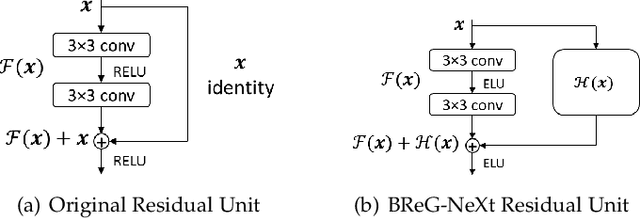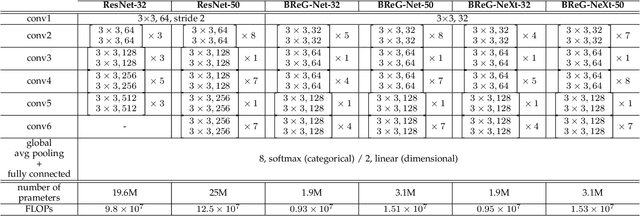BReG-NeXt: Facial Affect Computing Using Adaptive Residual Networks With Bounded Gradient
Paper and Code
Apr 18, 2020



This paper introduces BReG-NeXt, a residual-based network architecture using a function wtih bounded derivative instead of a simple shortcut path (a.k.a. identity mapping) in the residual units for automatic recognition of facial expressions based on the categorical and dimensional models of affect. Compared to ResNet, our proposed adaptive complex mapping results in a shallower network with less numbers of training parameters and floating point operations per second (FLOPs). Adding trainable parameters to the bypass function further improves fitting and training the network and hence recognizing subtle facial expressions such as contempt with a higher accuracy. We conducted comprehensive experiments on the categorical and dimensional models of affect on the challenging in-the-wild databases of AffectNet, FER2013, and Affect-in-Wild. Our experimental results show that our adaptive complex mapping approach outperforms the original ResNet consisting of a simple identity mapping as well as other state-of-the-art methods for Facial Expression Recognition (FER). Various metrics are reported in both affect models to provide a comprehensive evaluation of our method. In the categorical model, BReG-NeXt-50 with only 3.1M training parameters and 15 MFLOPs, achieves 68.50% and 71.53% accuracy on AffectNet and FER2013 databases, respectively. In the dimensional model, BReG-NeXt achieves 0.2577 and 0.2882 RMSE value on AffectNet and Affect-in-Wild databases, respectively.
 Add to Chrome
Add to Chrome Add to Firefox
Add to Firefox Add to Edge
Add to Edge